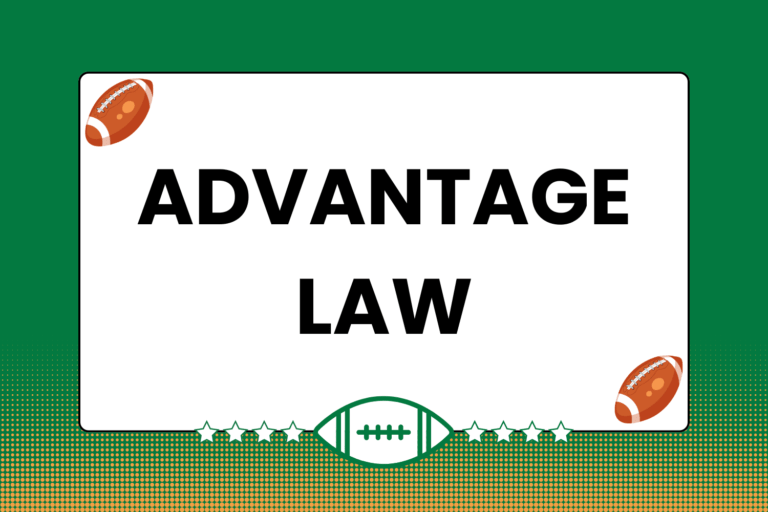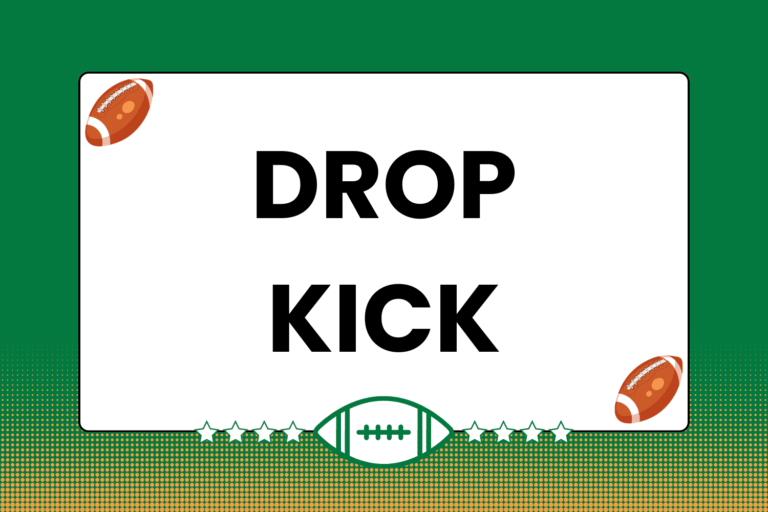Most of the activity in a rugby game is a fluid combination of running, passing, and colliding — not the calmest of scenarios. However, when the action momentarily stops and a place kick occurs, the ensuing play looks more fitting for a golfer than a rugby player. This kick requires concentration, precision, attention to technique, and — most importantly — knowing that no one on the opposing team will be close enough to deliver a bone-crushing blow. This guide explains when and how to take a place kick.
When to Place Kick
There are only two occasions when a place kick can be performed: When a penalty has been awarded, and after a try has been scored.
Not coincidentally, both of these situations necessitate a pause in the game’s action. This break gives the kicking player an opportunity to both set up and perform the place kick. In most other kicking situations, the kick is performed while the game is live; the only exceptions to this are the drop-out and free kick (which occurs after a penalty as well).
Setting Up the Kick
Place kicks used to be performed in one of two antiquated ways:
- The kicking player would dent the ground with the heel of one boot, and place one end of the ball in the resulting hole.
- A small pile of sand would be transported onto the field, and the kicking player would push one end of the ball into the sand.
While both of these methods are still technically legal, tees are almost always used for place kicks in today’s game. And though it rarely occurs outside of particularly windy matches, one of the kicker’s teammates can hold the ball. No matter how a team decides to hold the ball, though, it’s placed either at the spot of the penalty or — in the case of a try being scored — anywhere along a line that extends straight back from the spot where the ball was grounded.
Mental Edge
When attempting a penalty kick, the attacking team has one minute to perform the kick. Although the referee determines the exact amount of time the kicker can take, if that minute elapses for whatever reason (the ball keeps falling off of the tee, the kicker takes too long to perform the kick), the kick can technically be disallowed. In such instances a scrum takes place, with the formerly-penalized team awarded the put-in.
Positioning the Ball
While the spot of the kick determines how the ball is situated on the tee, most kickers position the ball in the following way:
- The ball is at an angle approximately 65-80 degrees from the ground.
- One end of the ball is pointed at the uprights, while the other is positioned on the tee.
In addition, some players rotate the ball so that one of its seams points at the uprights. The two aforementioned techniques, however, will have the biggest impact on the ball’s trajectory after it’s kicked.
Making the Kick
Once the ball is in position, it’s time for the kicker to line up. Again, the kicker’s exact positioning depends on the spot of the kick, so the information outlined below should only be considered a template rather than a strict rule:
Step 1: Pre-kick Positioning
At approximately a 45-degree angle, the kicker will take between three and five steps back from the ball. The direction of the angle depends on which foot the kicker uses; a right-footed kicker will be angled to the left of the ball, and vice versa. Once in position, the kicker will take aim by focusing on a specific spot between the uprights. Effective place kickers generally concentrate on a target, rather than simply running up to the ball and trying to send it anywhere between the uprights.
Step 2: Starting the Approach
In general, the number of steps back from the ball should be the same as the number of steps taken in the approach. In addition, the first step of the approach depends on the number of steps retreated — specifically, whether that number is even or odd:
- Odd number of steps: The first step should be made with the non-kicking foot.
- Even number of steps: The first step should be made with the kicking foot.
The goal is to keep the approach consistent with the set-up distance. For example, if the kicker takes three steps back but approaches in four steps, the kicking process can easily become convoluted and result in a poor kick. By following the rule outlined above, though, the last step of the approach will always be made with the non-kicking foot.
Step 3: Setting Up for the Kick
Rather than advancing towards the ball in a perfectly straight line, the kicker’s path should curve. This curved approach puts the kicker in the best position to make an accurate kick. It also allows the kicker to turn towards the ball just before the kick, which helps to generate power.
The last step of the approach is the first part of the actual kicking process. That last step is the “plant” step, which allows the kicker to maintain his balance while the kick is made:
- The plant (or non-kicking) foot should be within one foot of the ball, though the exact distance is a matter of personal preference.
- The toes of the plant foot should be pointed toward the uprights, which will help ensure that the kicker thoroughly rotates towards the ball at the end of the curved approach.
As the plant foot comes down, the kicking leg should draw back in preparation for the kick.
Step 4: Making the Kick
As the kick is made, it’s important for the kicker to be in an ideal kicking position: Head over the ball, with both shoulders facing the uprights. However, the two most important details of the actual kick have to do with a specific spot on both the kicking foot and the ball, and where those respective spots meet:
- The ball’s “sweet spot” — the place on the ball that will result in the most accurate kick — is about 1/3 of the way up from the bottom point of the ball, right along the long axis.
- The kicker’s foot should be turned outward, with the toes pointing down. This exposes the area between the ankle and instep, which is the best kicking area on the foot.
The key to a successful place kick is finding the ball’s sweet spot with that inside area of the kicking foot.
Kicking to Victory
Many rugby games have been won by a single kick. In fact, it’s somewhat common for a team with particularly talented kickers to focus most of their attacking efforts on getting into kicking-friendly situations to rack up easy points. Regardless of how much it’s part of a team’s strategy, the ability to place kick is a crucial and useful skill.





